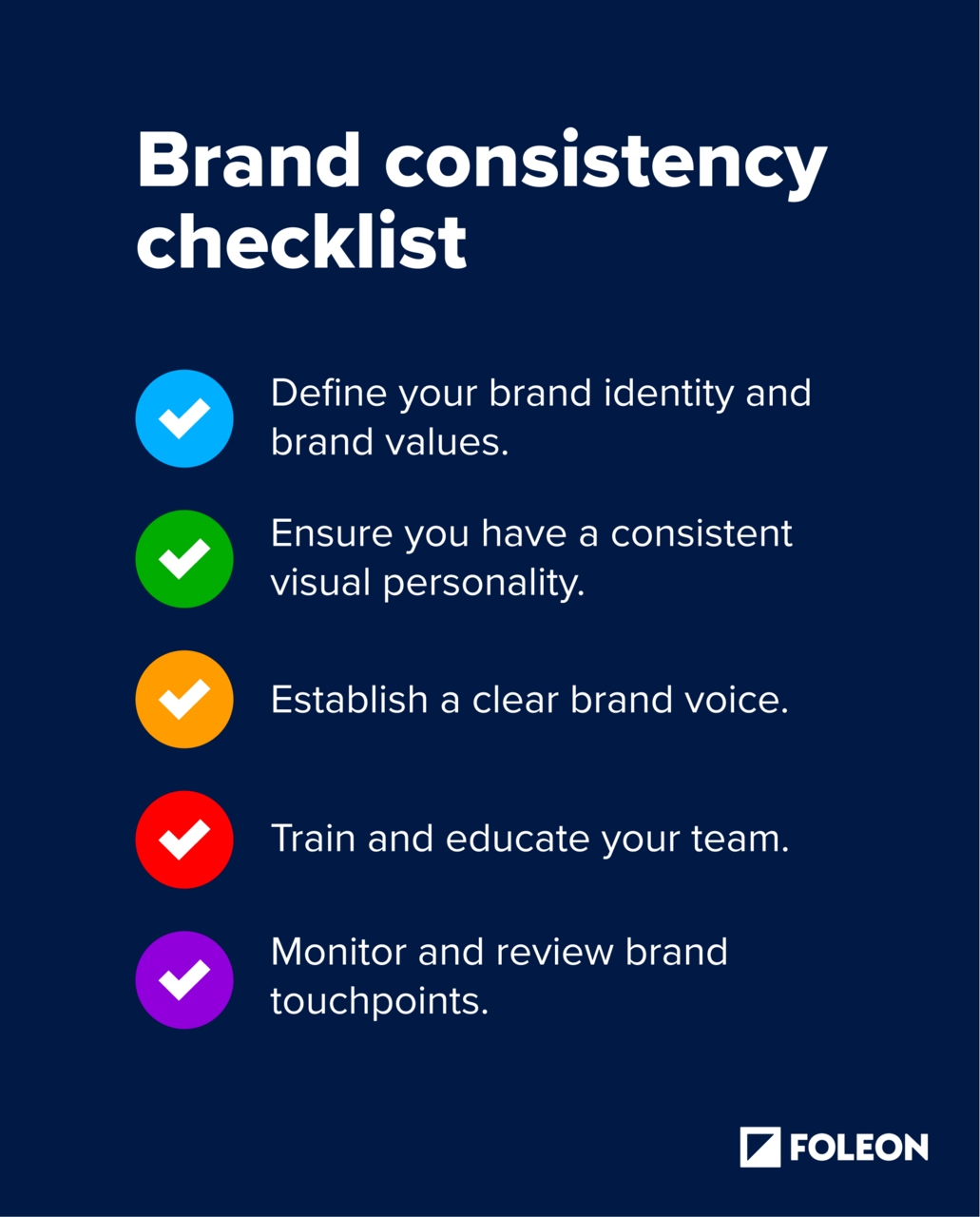These days, a customer's journey is much more complex than it used to be. With the rise of technology, alternative marketing channels, and the importance of a diverse set of marketing collateral, there are many more potential routes to becoming a customer. As well as that, we’re in an era of heightened competition and consumer expectations.
Cultivating loyalty and building trust are vital ingredients for a successful brand in 2023. To establish a consistent brand presence and build that trust, interactions with your brand must be cohesive throughout the various customer touchpoints.
That’s where brand consistency comes in.
Consistent branding has never been more critical
In this age of digital consumerism, your product(s) alone isn’t enough to entice audiences to become returning customers. Maybe they’ll make a one-off purchase, but they’re unlikely to return without consistent branding to make them remember you.
To turn customers into advocates, every interaction with your brand should reinforce the same message or idea each and every time. This way, you can garner trust and recognition through effective brand governance.
According to a survey in the United States, 46 percent of consumers say they would pay more to purchase from brands they trust.
Read also: The 2023 Complete Guide to: Building and Applying a Content Marketing Strategy
So, what is brand consistency?
Your brand is your company's identity. It’s what you, as an organization stand for. It’s the culture you adhere to and the feeling you evoke in your customers. It’s the story you tell.
Brand consistency means ensuring the story and the identity you’ve created is consistent across channels. This way, you present a unified and, hopefully, lasting impression to your audience.
It’s important to understand that brand consistency is closely linked to brand management, positioning, and values. Like an ecosystem, each of these needs the other to succeed.
Why is brand consistency important?
Brand consistency is important because it leads to brand recognition. When customers recognize your brand (and have positive associations with it), they’re more likely to make purchases and commit to your company for the long term.
According to this report, 68 percent of businesses say brand consistency has contributed to 10 percent or more revenue growth.
Benefits of brand consistency:
- Garner trust: Consistent branding establishes trust, conveying authenticity and a genuine commitment to delivering a consistent experience.
- Increased recognition: Consistent branding elements, such as logos, colors, and visual identity, make it easier for customers to recognize and remember your brand, increasing brand recall and making it stand out.
- Differentiate: Consistency in messaging and positioning help distinguish your brand from competitors, highlighting your unique value proposition and creating a distinct identity in your customers' minds.
- Cultivate loyalty: By consistently meeting customer expectations and delivering positive content experiences, you cultivate loyalty, encouraging repeat business and advocacy among satisfied customers.
- Champion business growth: Brand consistency will increase customer loyalty, referrals, and a strong reputation, ultimately driving business goals and growth, attracting and retaining customers, and increasing revenue.
See: How you can maximize your company's content.
Examples of brand consistency
The most iconic and recognizable brands are the ones that are consistent. They are clear about who they are, and regardless of where you interact with them, you have the same or similar experience every time. For some inspiration, think about the brands you know and love, McDonald’s and their iconic golden arch, the Nike swoosh, Coca-Cola, Starbucks, the list goes on and on.
Here are some examples of B2C brands we believe B2B companies can learn a lot from regarding brand consistency.
Barbie
Mattel’s Barbie is an iconic doll brand and has been a household name for decades. However, the Barbie brand has been given a new lease of life with the release of the new movie and the supporting campaign. The new Barbie movie campaign is an excellent example of keeping your brand consistent while evolving and embracing innovation.
For example, Barbie has effectively embraced digital platforms, tools, and social media to extend the reach of its campaign. One of the most impressive marketing moves was to create an AI-powered Barbie Selfie Generator, which transforms users' facial features into a Barbie-like image.
Though they’ve adapted to the new audiences and channels, Barbie's signature design has remained consistent, including her fashion, iconic blonde hair, and accessories.
While the movies may introduce different outfits and styles to suit various themes and narratives, Barbie's overall look and feel as a fashion-forward doll remain recognizable and consistent with the brand's heritage.
Oatly
Another example of a brand that we admire for its innovation while staying consistent and on-brand is Oatly.
From its unique logo and packaging to its witty and irreverent tone of voice, Oatly’s distinct and memorable brand identity drives success and sets it apart from its competitors. As mentioned before, a hallmark of a successful brand is consistent messaging.
Oatly's tone of voice and messaging maintains a sense of authenticity and originality. Across all touchpoints, whether it's their product packaging, advertising campaigns, or social media presence, Oatly maintains a cohesive and consistent message throughout. They are also familiar with brand activation campaigns and some out-of-the-box marketing strategies.
However, no matter what they do, they are consistently themselves while doing it. Oatly is an excellent example of a company with a clear and consistent brand identity that allows them to drive business growth and differentiate themselves.
Okay, so now you’re wondering, how do I do that? Let’s dive in.
How to achieve brand consistency in 5 steps
Step 1: Define your brand identity and brand values
Your brand identity is how you communicate your brand’s image. It’s what you say, how you say it, the visuals you use to support it, and the feeling you want to evoke from your audience. While brand values are the core beliefs and principles that guide your brand's behavior.
Clearly define your brand's identity, including its values, mission, personality, and visual elements. This involves identifying your target audience, understanding their needs and preferences, and aligning your brand identity with their expectations.
Step 2: Ensure you have a consistent visual personality
Develop a consistent visual identity that reflects your brand's essence. This means designing a logo visually representing your brand and using consistent typography and color schemes across all brand collateral.
Step 3: Establish a clear brand voice
Determine the language, style, and personality that align with your brand's identity and resonate with your target audience.
Make sure you consistently apply your brand voice in all written communications, including social media posts, website content, ads, and customer support articles.
Step 4: Train and educate your team
It's so important to properly educate and train your team members on your brand's identity, values, and messaging. Ensure that everyone, particularly those who deal with customers and those who write content, understands how to communicate the brand's essence effectively.
Define clear guidelines and examples to guide their interactions with a brand guide.
Step 5: Monitor and review brand touchpoints
It’s good practice to consistently monitor and review all brand touchpoints to ensure consistency across different platforms.
Conduct audits of your website, social media profiles, advertising campaigns, packaging, and other brand collateral to identify any inconsistencies and be sure to make necessary adjustments.
Top tip: See how you can guard quality control through the content creation process.

Final words
Now you should be equipped with the tools you need to build a consistent brand that will establish trust and authenticity with your target audience. Allow your brand to convey your values, and do it so your customers will trust you in the long run.
Your brand is your chance to tell your customers a story. Make sure it’s one worth telling.


